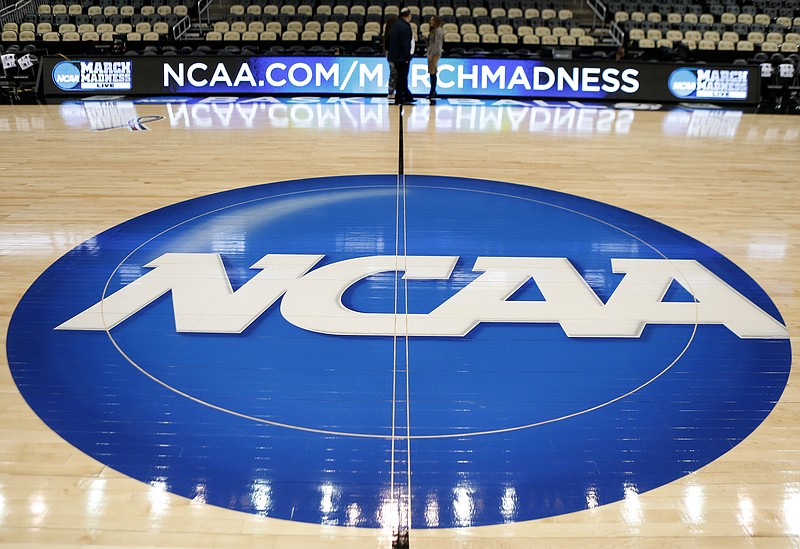It's a start.
That may be the best way to view Wednesday's release of the Commission on College Basketball's report on what's wrong with and what recommendations it believes can fix big-time college hoops.
As with any recommendation, its worth will eventually be tied to what becomes law, or, in this case, a new NCAA rule or bylaw. And as with most such committees or commissions, this 14-member group could have gone further in its suggestions for distancing the NCAA from the big-money shoe companies and their current death grip on the sport.
Whether it be the grassroots level of organized high school ball, the cesspool that is AAU ball or the toxic waste dump many believe Power Five conference hoops to be as played by the Dukes, Kansases, Kentuckys, Louisvilles and North Carolinas of the sport, if it's questionable, there's probably shoe company money or agent money behind it.
And in some cases, perhaps most cases, the agents are tied to the shoe companies, as has often been alleged in the ongoing FBI probe into the sport that led to NCAA president Mark Emmert forming the commission.
What's disconcerting is that it chose to lead off its report by targeting one-and-doners, who normally make up fewer than 30 players a year out of the more than 4,000 who fill Division I rosters in a particular season. So you're saying that no more than 1 percent of players, if that, are ruining the sport. What a joke.
The root of the mess is, like the root of most bad things, money. Who's paying it. Who's receiving it. Who's benefiting from it.
Anyone who's a fan of the somewhat maligned hoops movie "Blue Chips" can tell you there was a time when boosters were arguably the biggest problem in college athletics, both with men's basketball and football.
Remember the line from slimy booster Happy (J.T. Walsh)?
"Relax, it's all working," he tells Western University coach Pete Bell (Nick Nolte).
That was the sport in the 1980s. Have satchel, will travel. Far.
The end game really hasn't changed, but its subtlety has. It's paid in installments and promises to family members and friends. It's tied to agents. It's gross and disgusting and demeaning, but it also shouldn't paint those who accept such funding as victims.
As commission chair Condoleezza Rice - our 66th Secretary of State and the former provost of Stanford - noted in her prepared statement Wednesday:
"It is time for coaches, athletic directors, university presidents, Boards of Trustees, the NCAA leadership and staff, apparel companies, agents, pre-collegiate coaches - and, yes, parents and athletes - to accept their culpability in getting us to where we are today."
Bingo! That's right, parents and athletes, too. Because if they just said no to these under-the-table offers, much of this would go away.
But in a society that tends to paint anyone and everyone as a victim of something or someone, that lack of character is somehow forgotten. It's not their fault, because they're poor or uneducated or the school's making millions of dollars, so why shouldn't they get a cut beyond a free education?
And to be fair, the commission did somewhat address the often overlooked value of a college scholarship.
Said Rice: "He (the athlete) has a chance to receive that prized possession in our economy and our society - a college degree. He will meet influential people who can mentor him throughout his life and who can help him to establish a career after graduation. His earning power over a lifetime could be as much as $1 million greater than a noncollege graduate. Given that only 1.2 percent of college basketball players go on to play in the NBA and that the average NBA career is 4.5 years, the college degree is the real ticket to financial security for most student-athletes."
In fact, the commission probably should have recommended the above statement become a mandatory posting in every major college basketball locker room - all 351 of them.
Nor did it duck the egregious lack of a penalty regarding the North Carolina academic scandal, with Rice rather sharply noting: "Member institutions cannot be permitted to defend a fraud or misconduct case on the ground that all students, not just athletes, were permitted to 'benefit' from that fraud or misconduct. Coaches, athletic directors and university presidents must be held accountable for academic fraud about which they knew or should have known."
But will the NCAA listen? Will it learn? Beyond that, will it now turn to outside sources to investigate and adjudicate major violations, as the commission also recommended?
Yes, it's a start. But only time will tell if this report becomes the smoking gun that leads to meaningful change or just another smokescreen for the NCAA to hide behind until the next scandal breaks.
Contact Mark Wiedmer at mwiedmer@timesfreepress.com.
